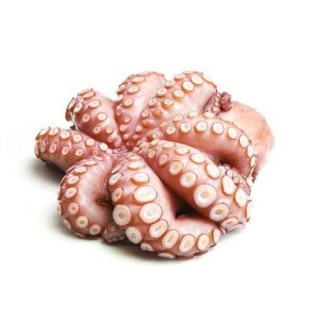There are 37 products.
Sardine
"Sardine" and "pilchard" are common names for various small, oily forage fish in the herring family Clupeidae. The term "sardine" was first used in English during the early 15th century, it comes from the Italian island of Sardinia, around which sardines were once abundant.
Squid
Squid are cephalopods in the superorder Decapodiformes with elongated bodies, large eyes, eight arms and two tentacles. Like all other cephalopods, squid have a distinct head, bilateral symmetry, and a mantle. They are mainly soft-bodied, like octopuses, but have a small internal skeleton in the form of a rod-like gladius or pen, made of chitin.
Octopus
An octopus (pl: octopuses or octopodes, see below for variants) is a soft-bodied, eight-limbed mollusc of the order Octopoda (/ɒkˈtɒpədə/, ok-TOP-ə-də). The order consists of some 300 species and is grouped within the class Cephalopoda with squids, cuttlefish, and nautiloids.
Octopus
An octopus (pl: octopuses or octopodes, see below for variants) is a soft-bodied, eight-limbed mollusc of the order Octopoda (/ɒkˈtɒpədə/, ok-TOP-ə-də). The order consists of some 300 species and is grouped within the class Cephalopoda with squids, cuttlefish, and nautiloids.
Octopus
An octopus (pl: octopuses or octopodes, see below for variants) is a soft-bodied, eight-limbed mollusc of the order Octopoda (/ɒkˈtɒpədə/, ok-TOP-ə-də). The order consists of some 300 species and is grouped within the class Cephalopoda with squids, cuttlefish, and nautiloids.
Squid
Squid are cephalopods in the superorder Decapodiformes with elongated bodies, large eyes, eight arms and two tentacles. Like all other cephalopods, squid have a distinct head, bilateral symmetry, and a mantle. They are mainly soft-bodied, like octopuses, but have a small internal skeleton in the form of a rod-like gladius or pen, made of chitin.
Sardine
"Sardine" and "pilchard" are common names for various small, oily forage fish in the herring family Clupeidae. The term "sardine" was first used in English during the early 15th century, it comes from the Italian island of Sardinia, around which sardines were once abundant.








